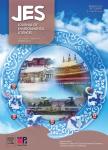Production and application of anaerobic granular sludge produced by landfill
Production and application of anaerobic granular sludge produced by landfill作者机构:College of Environmental Science and Engineering Shanghai Jiao Tong University Shanghai 200240 Shaoxing Wastewater Treatment Development Co. Ltd. Shaoxing 312074 China Department of Environmental Engineering Zhejiang University Hangzhou 310029 China
出 版 物:《Journal of Environmental Sciences》 (环境科学学报(英文版))
年 卷 期:2007年第19卷第12期
页 面:1454-1460页
核心收录:
学科分类:083002[工学-环境工程] 0830[工学-环境科学与工程(可授工学、理学、农学学位)] 08[工学]
基 金:Project supported by the Major Scientific Key Problem Program of Scientific Commission of Zhejiang Province China(2004C13027)
主 题:anaerobic granular sludge expanded granular sludge bed (EGSB) granulation landfill seeding sludge
摘 要:Sludge granulation is considered to be the most critical parameter governing successful operation of an upflow anaerobic sludge blanket and expanded granular sludge bed (EGSB) reactors. Pre-granulated seeding sludge could greatly reduce the required startup time. Two lab-scale and a pilot-scale EGSB reactors were operated to treat Shaoxing Wastewater Treatment Plant (SWWTP) containing wastewater from real engineering printing and dyeing with high pH and sulfate concentration. The microbiological structure and the particle size distribution in aerobic excess sludge, sanitary landfill sludge digested for one year, and the granular sludge of EGSB reactor after 400 d of operation were analyzed through scanning electron microscopy (SEM) and sieves. The lab-scale EGSB reactor seeded with anaerobic sludge after digestion for one year in landfill showed obviously better total chemical oxygen demand (TCOD) removal efficiency than one seeded with aerobic excess sludge after cation polyacrylamide flocculation-concentration and dehydration. The TCOD removed was 470.8 mg/L in pilot scale EGSB reactor at short hydraulic retention time of 15 h. SEM of sludge granules showed that the microbiological structure of the sludge from different sources showed some differences. SEM demonstrated that Methanobacterium sp. was present in the granules of pilot-scale EGSB and the granular sludge produced by landfill contained a mixture of anaerobic/anoxic organisms in abundance. The particle size distribution in EGSB demonstrated that using anaerobic granular sludge produced by sanitary landfill as the seeding granular sludge was feasible.



